HOPE Center for the Arts Debuts with L-Acoustics L-ISA Immersive Hyperreal Sound HOPE Center for the Arts Debuts with L-Acoustics L-ISA Immersive Hyperreal Sound...
Former CityStage venue gets a dynamic A Series system upgrade in a full 360-degree configuration for its non-profit mission
SPRINGFIELD, Massachusetts – October 2025 – For nearly a decade, Springfield, Massachusetts’ former CityStage theater sat dormant, but thanks to the philanthropic gusto of Pride Stores founder Robert Bolduc and his Hope for Youth and Families Foundation, it has been transformed into a dynamic arts hub now known as HOPE Center for the Arts. Sonically reinforced with new L-Acoustics L-ISA Hyperreal Immersive technology featuring A Series loudspeakers, the space will host professional concerts and productions – including Sweet Honey in the Rock, John Pizzarelli, and Judy Collins – while also serving as an educational facility for middle and high school students.
“This is Bob’s [Bolduc] second act, giving back to the community,” reports Jason Raboin, managing partner at Klondike Sound, which designed and integrated the L-Acoustics system. “HOPE Center really places a premium on education, and as part of that, its team was committed to investing in the future of technology – what will be most useful for the young people being trained there as they get older. With that in mind, the venue allocated resources for an immersive audio system and chose L-ISA, which is astounding.”
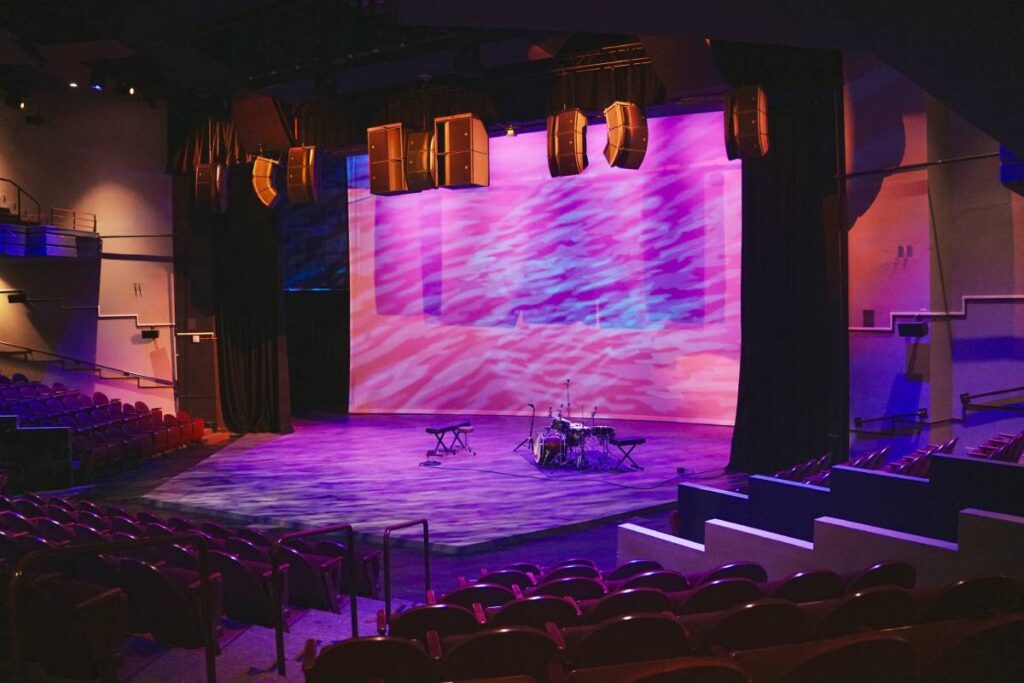
During the pandemic, Klondike installed an L-Acoustics Kara II system for Springfield’s Symphony Hall, which is near HOPE Center. That success opened the door for this project. “From what I’m told, this is the first L-ISA venue install with 360-degree surrounds in New England,” says Raboin. “These kids are diving right into the deep end of cutting-edge tech.”
According to Kyle Homstead, HOPE Center’s technical director and a veteran FOH engineer, Bolduc made a $15 million investment into this 45,000-square foot arts complex that has a 500-capacity live venue as well as an 85-seat black box theater, music rehearsal rooms, dance studios, sprung floors, media labs with both audio and video editing suites, and visual arts studios. The administrative staff for the HOPE Center numbers between six and eight people, while a dozen different teaching artists come in to work with youth.
“In the youth programming, we have performing arts, visual arts, and technical arts,” explains Homstead. “There are kids in the technical arts track who are learning real-world production skills.” The middle and high schoolers can learn through classes and youth programs, and they can also intern on the professional productions that come to the center. “The whole place is essentially a learning lab for young people,” he notes, adding that the unusual architecture of the theater, which is a half-round stage with an octagonal thrust, lends itself to immersive technologies that can connect artists and audiences.
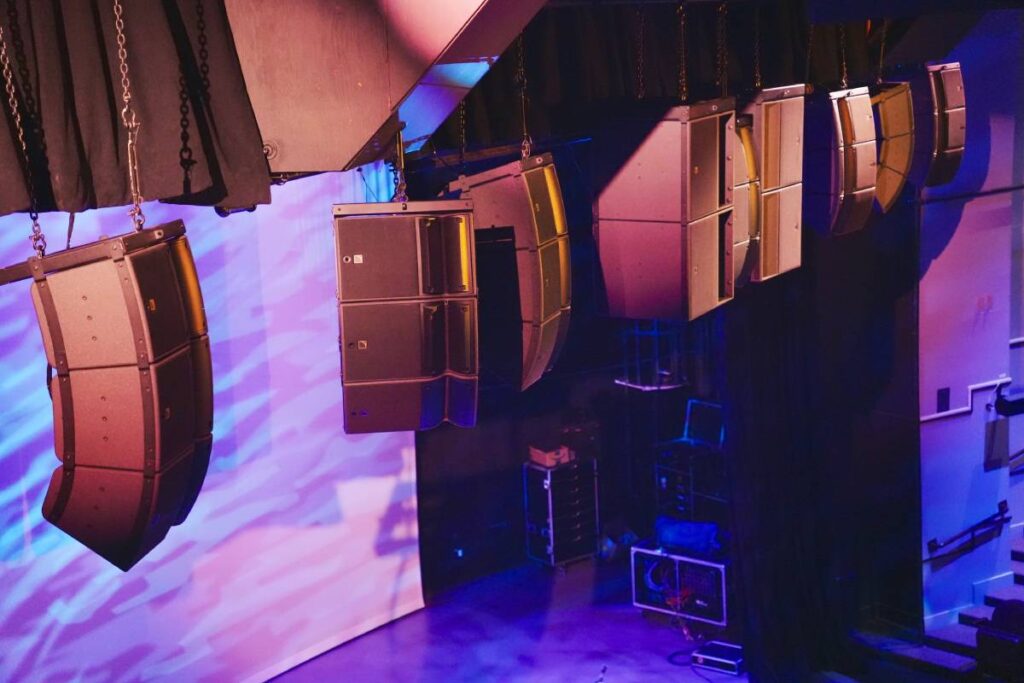
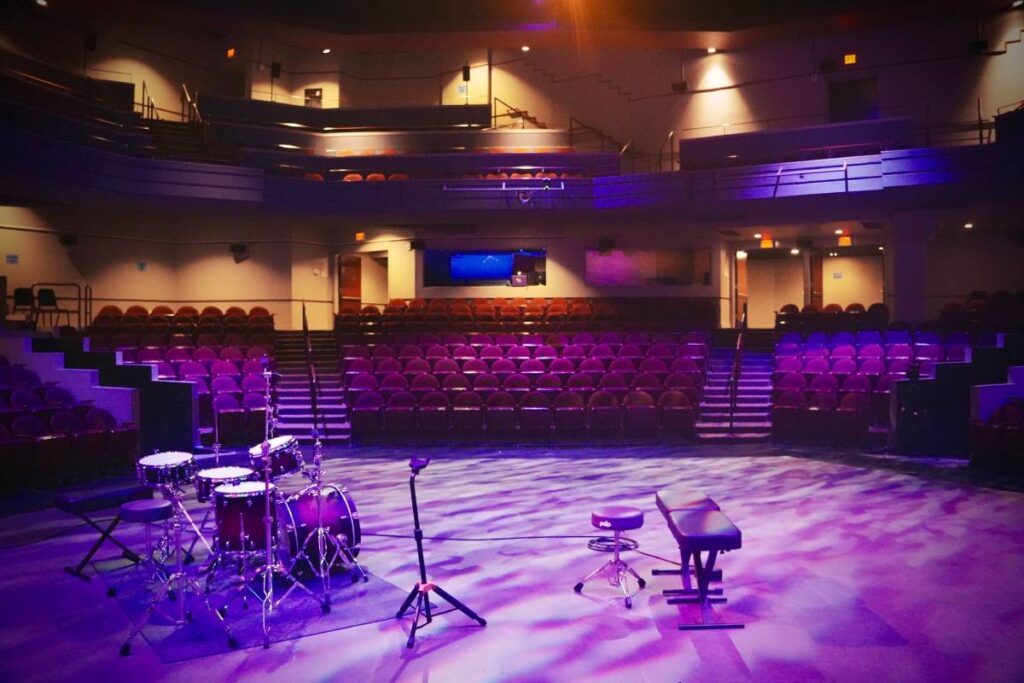
HOPE Center’s new system for its main room includes five L-Acoustics A Series Scene arrays, each comprised of two A10i Focus flown over a single A10i Wide, equally spread out over the stage between the left and right edges of the proscenium. Adjacent to the center Scene array are two side-by-side hangs of two KS21i subs, while out-fill arrays of one A10i Focus over two A10i Wide are flown between the Scene 1/2 and 4/5 arrays.
Out in the house, a total of 26 coaxial X6i are mounted as surrounds, giving the room true 360-degree immersive capabilities, and every loudspeaker in the system is efficiently powered by a combination of L-Acoustics LA7.16i and LA2Xi amplified controllers. At FOH, a Yamaha DM7 console is providing a MADI feed to the L-Acoustics L-ISA Processor II, which is controlling the space’s object-based mix.
L-ISA ultimately provides great coverage for the room and good sightlines for the 25-foot tall, 40-foot wide video screen. With stadium seating and a stage only three inches off the floor of the first row, all attendees can hear and see the robust sound and video well.
“The consistency L-ISA provides to every seat in the house, just with stereo or mono programming, was worth the investment in and of itself,” says Raboin. “I went to the potentially worst seat in the room and it sounded exactly the same as at the mix position. I think those benefits will be immediately noticeable, even if the average person doesn’t know that they’re noticing.”
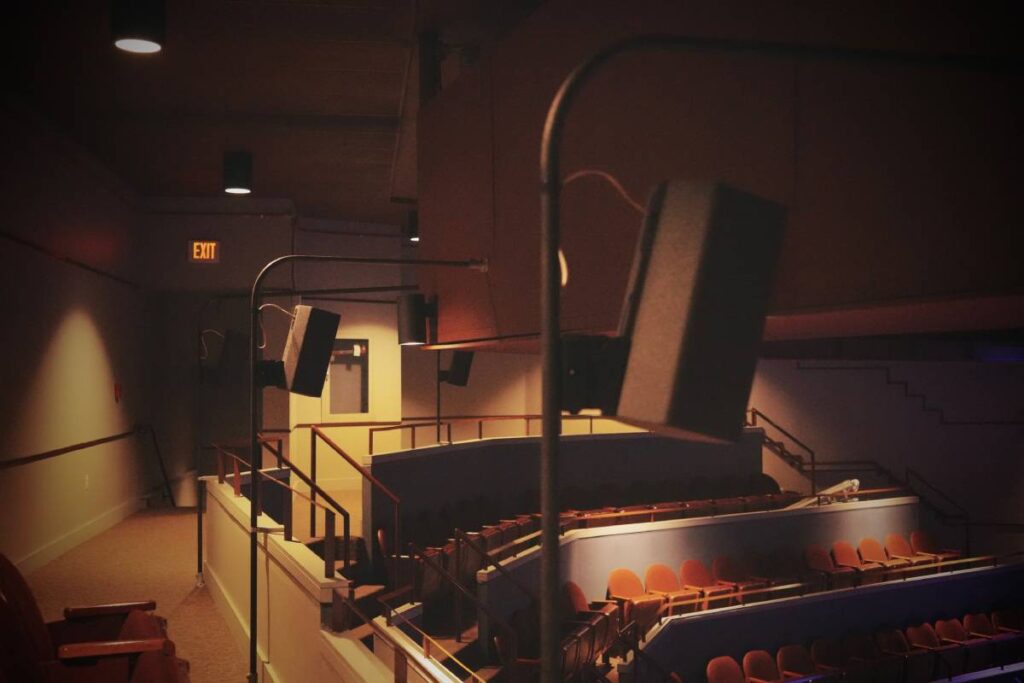
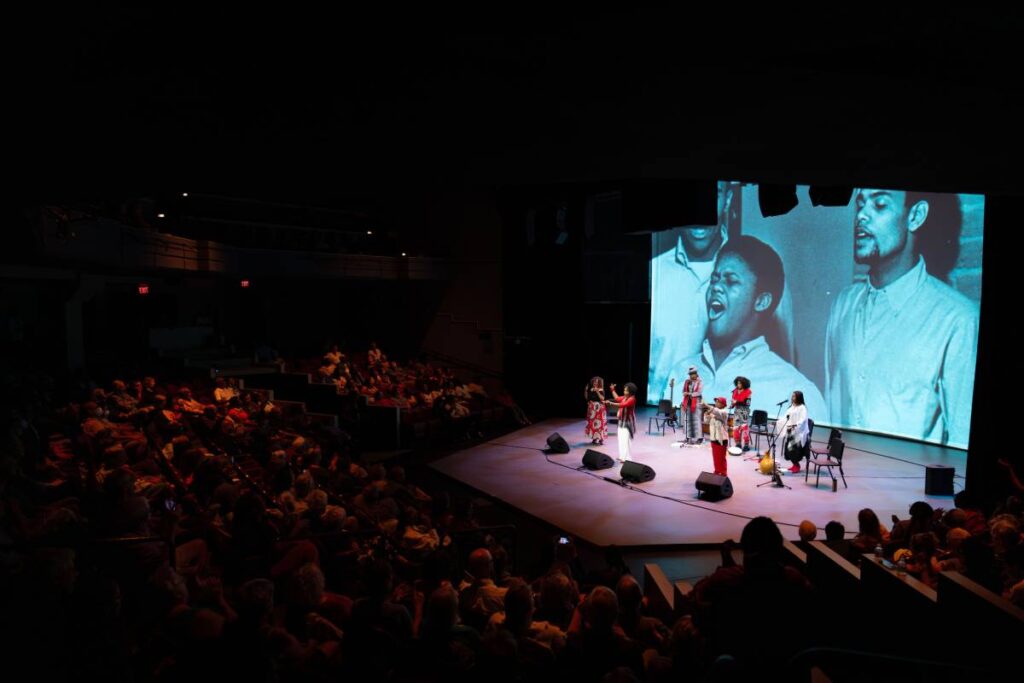
The five arrays for the proscenium were hung a bit upstage due to the thrust out of the proscenium and what Raboin calls an “oddly asymmetrical” layout. While he thought there would be an issue of gain-before-feedback, the Klondike team hung several A10i as a test and “it was great,” he says. “We thought we were going to have to sacrifice the percentage of the audience that would get the L-ISA impact by having it come out over the thrust, but we didn’t. I’m not sure why, but it just works.”
A major emphasis of this facility is interdisciplinary collaboration, so a hip-hop writing class could flow into dance choreography, while a tech crew integrates lighting, visuals, and spatial audio.
“We have projection mapping across the entire stage on the stage floor, and live video that feeds into the projection as well,” says Homstead. “It’s a really sophisticated set of state-of-the-art tools that pushes boundaries because it’s all immersive.”
The students experience all of this through an afterschool program with spotlight performances where they share works in progress, everything from poetry readings to songs to dance performances. HOPE Center also brings in professional artists for daytime performances and Q&As.
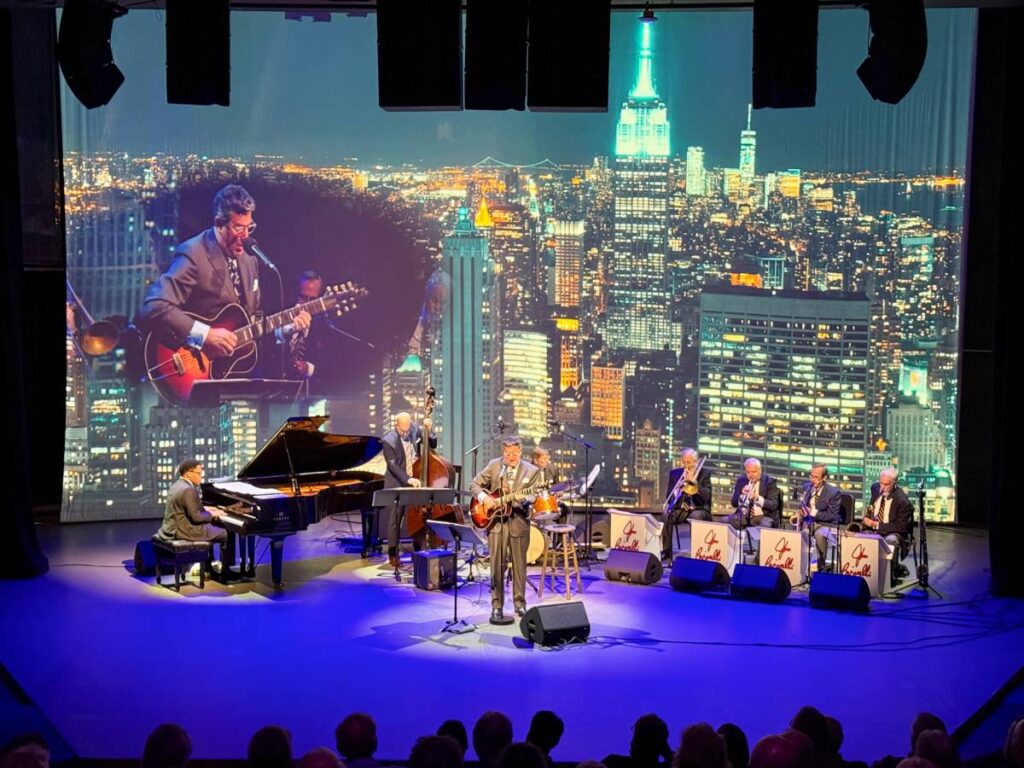
Each day in the audio lab, kids create music with MIDI keyboards and microphones. There are a dozen stations running Logic, and they’re also learning to design soundscapes for the L-ISA setup and for immersive audio.
“We have a lot of Dolby Atmos content mapped to the L-ISA system,” says Homstead. “There’s a lot of content available now. It’s great for the kids to be able to design and just think about immersive audio as they’re creating. By handing kids a very technically sophisticated but still intuitive facility, it allows them to create and experience the production values that they’re consuming on their phones all day when they hop on YouTube, Instagram, and TikTok.”
Homstead stated that Klondike is “fantastic” to work with. “They were really thoughtful in their approach and meticulous about the end result,” he says. “L-Acoustics also came in and did the system calibration and training, and they were amazing. We really enjoyed working with them through the process.”
“The owner and everybody involved asked, ‘How do we make this better? How do make this the best experience for audiences and for students?’” adds Raboin. “And, of course, it’s also, ‘How do we make this cost-effective?’ HOPE Center’s L-Acoustics L-ISA installation checked all of the boxes and turned out really cool.”
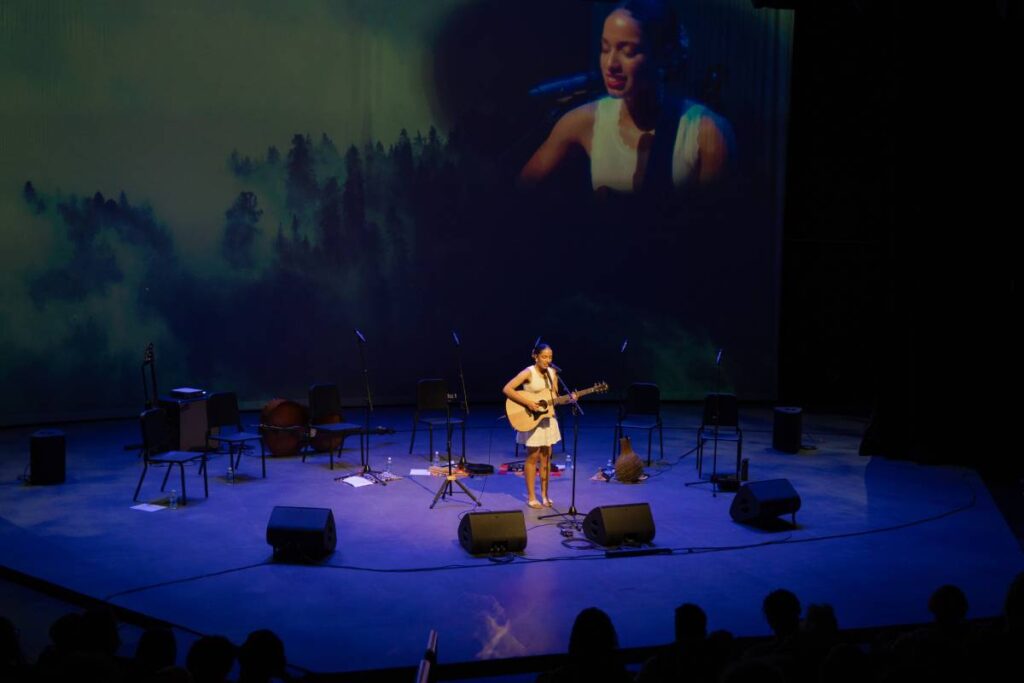
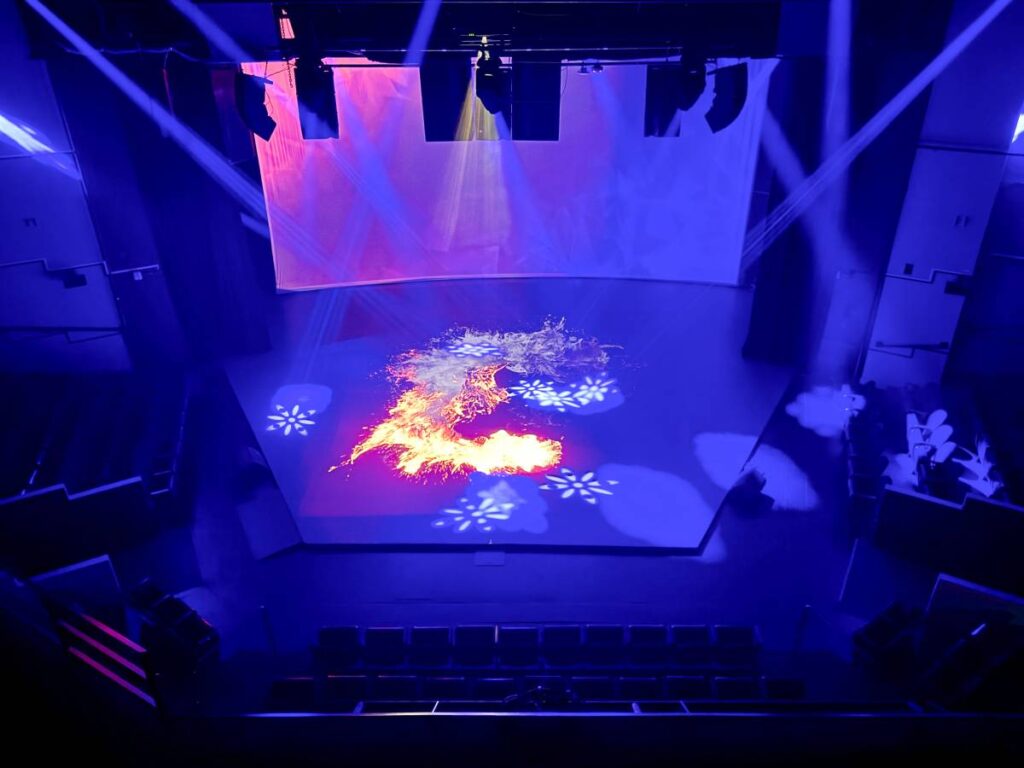
For more info on HOPE Center for the Arts, visit www.hopecenterforthearts.org. Klondike Sound can be found online at www.klondikesound.com.
Press release assets are found by clicking here.
Subscribe to Our Newsletter
Get the lastest news and find out about listening events.